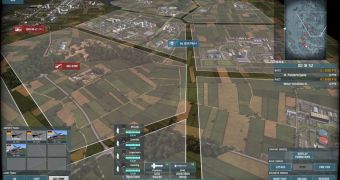Fallout has taught gamers that “War never changes” but a few matches of Wargame AirLand Battle show just how much it does change and how many lessons that gamers have learned over the years are no longer valid when applied to XX century warfare.
I’ve argued before that Wargame AirLand Battle fills a void in the real-time strategy space and most players coming to the title will have experience either with historical strategy, stretching from the Middle Ages to World War II, or with far future conflicts.
I have always believed in turtling and fortifications, in drawing in the enemy into carefully prepared kill zones.
The lack of defensive play or bunkers in Wargame and the capabilities of the scouting forces make this tactic pretty hard to implement and even careful ambushes can easily be avoided by applying superior firepower.
The name AirLand Battle refers to the doctrine that underpinned United States military doctrine on the European front from early in the ‘80s until the USSR finally disappeared as a threat about ten years later.
The novel idea was to carefully coordinate land and air assets in order to prevent the enemy from delivering reinforcements to the front, while launching counter-blitz operations against Warsaw Pact forces to blunt their offensive.
The development team at Eugen Systems wants their strategy game to reflect the visions of the American generals.
In Wargame, players need to keep their forces constantly on the move while making sure that they don’t let them stumble into prepared enemy positions.
Gamers also need to remember to provide solid protection against aerial attacks, either by using their own airforce or by deploying good and fast AA vehicles.
War always changes and it’s very nice to see a developer leave known territory in order to explore a new military doctrine and design a game that emphasizes its most important tenets.

 14 DAY TRIAL //
14 DAY TRIAL //